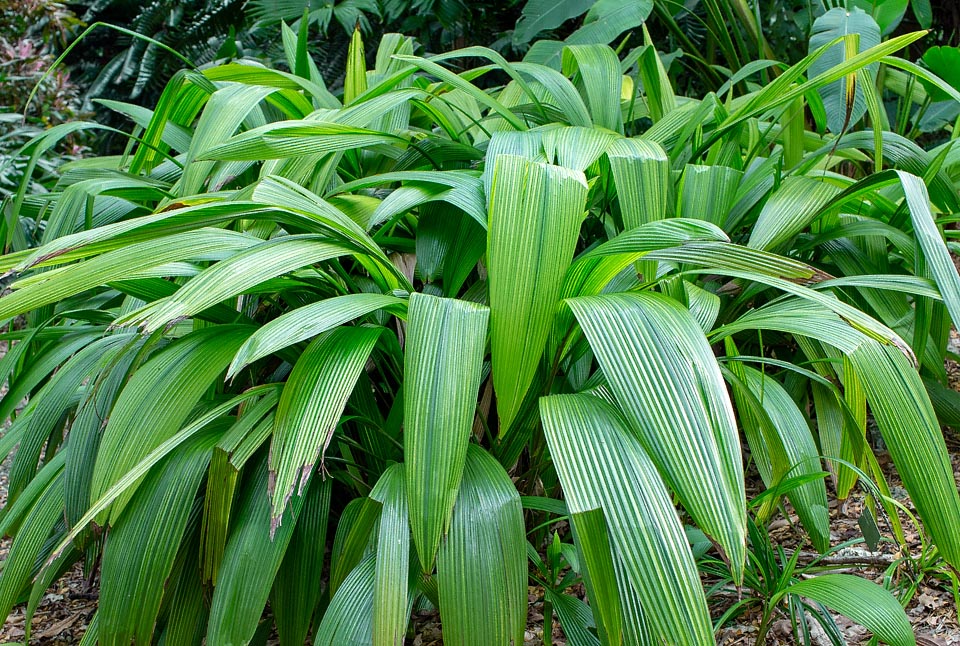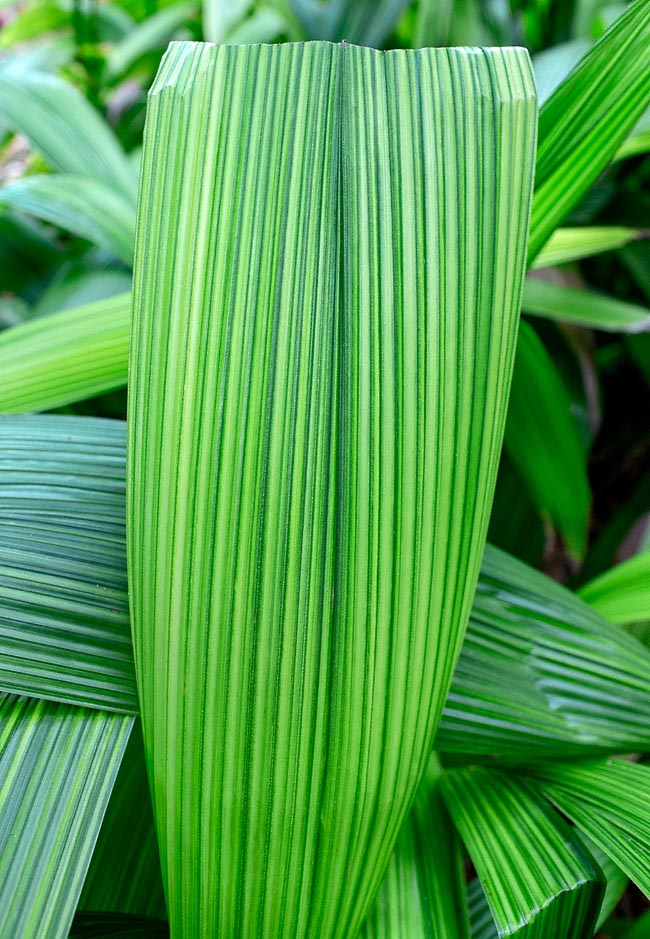Family : Hypoxidaceae

Text © Pietro Puccio

English translation by Mario Beltramini

Native to South-East Asia up to beyond Australia, the Molineria capitulata is a perennial herbaceous plant with tuberose rhizome, forming dense tufts up to 1 m tall © Giuseppe Mazza
The species is native to Australia (Queensland), Bhutan, China (Fujian, Guangdong, Guangxi, Guizhou, Sichuan, Xizang and Yunnan), Japan, Java, Laos, Lesser Sunda Islands, Malaysia, Myanmar, Moluccas, Nepal, New Guinea, Nicobar Islands, North-eastern India, Philippines, Salomon Islands, Sri Lanka, Sulawesi, Sumatra, Taiwan, Thailand and Vietnam where it grows in the under-wood of the humid forests at low altitudes.
The genus is dedicated to the Italian botanist Ignazio Bernardo Molineri (1741-1818); the specific name is the Latin adjective “capitulatus, a, um” = having a small head, with reference to the globose and compact inflorescences.
Common names: palm-grass, weevil-lily, whale back (English); wa leng (Bangladesh); capim-palmeira, curculigo, falsa-palmera (Brazil); chuán zǐ cǎo, da ye xian mao (China); san ba sare u (Japan); bedur (Java); wagapul (Sri Lanka); kor, phaiphek, sage, togojuni (India); tsûn á chháu (Taiwan).
The Molineria capitulata (Lour.) Herb. (1837) is a perennial herbaceous species, acaulescent, evergreen, up to 1 m tall, with tuberous rhizome and creeping stolons forming dense tufts.

Leave with parallel veins, very decorative, and rhizomes with medicinal virtues © Giuseppe Mazza
The leaves, on a 30-70 cm long grooved petiole, are basal, simple, curved, plicate, oblong-lanceolate with acuminate apex, entire margin and parallel veins, of intense green colour and glabrous above, with a sparse hair along the veins below, 40-90 cm long and 5-20 cm broad.
Axillar inflorescences, on a 10-30 cm long pubescent peduncle curved at the apex, racemose, dense, globose, bearing several bisexual flowers, on a 6-8 mm long pedicel, subtended by lanceolate villous gree bracts, opening in succession. Corolla formed by 6 oblong-ovate tepals with obtuse yellow apex, about 8 mm long and 4 mm broad, 6 stamens, about 5 mm long, villous sub-globose ovary and style longer than the stamens. The fruits are sub-globose white berries, of 5-7 mm of diameter, containing numerous sub-globose black seeds of 1-2 mm of diameter.
It propagates by seed in draining organic loam maintained constantly humid at the temperature of 24-26 °C, but usually and easily in spring by division. Highly decorative species cultivated since long time in many tropical and subtropical countries where in some instances has escaped the cultivation naturalizing.
It can be utilized in mass, for borders, as soil cover and at the base of great trees, as it can grow indifferently in full sun as well as in shade, requires little cares and may stand temperatures of some degree less than 0 °C for a short period with loss of the aerial part, but re-vegetating in spring. It requires well drained soils, rich of organic substance, slightly acidic to neutral, maintained almost constantly humid, but without stagnations.
Frequently cultivated in pot for the decoration of inner spaces utilizing an organic loam with addition of 30% of coarse siliceous sand or agri-perlite to improve the drainage. Frequent watering during the summer period, more spaced in winter, allowing the upper layer of the loam to dry up, and monthly fertilizations, in spring-summer, with hydro-soluble products balanced with micro-elements at 1/3 of the dosage shown on the package.
The fruits are edible, with sweet taste, and the leaves are utilized by some local populations to wrap foods and to obtain the fibres with which are realized roped and fishing nets. The rhizomes are variously utilized in the traditional medicine for various pathologies, in particular eye infections and gastric disorders.
Synonyms: Leucojum capitulatum Lour. (1790); Curculigo recurvata W.T.Aiton (1811); Molineria plicata Colla (1826); Molineria recurvata (W.T.Aiton) Herb. (1837); Molineria sulcata Kurz (1869); Curculigo capitulata (Lour.) Kuntze (1891); Tupistra esquirolii H.Lév. & Vaniot (1906); Curculigo glabra Merr. (1907); Veratrum mairei H.Lév. (1915); Molineria hortensis Britton (1924); Curculigo fuziwarae Yamam. (1934); Curculigo strobiliformis D.Fang & D.H.Qin (1996).
